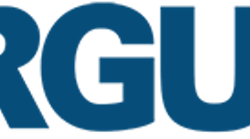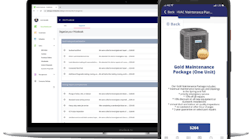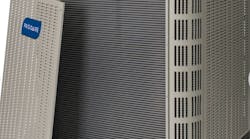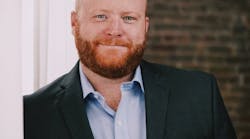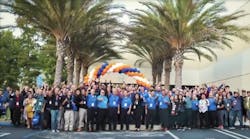One of the most vexing problems businesses face today is the increase in medical costs. “Health expenditures in the United States continue to grow, and the United States spends more on healthcare than any other nation,” according to Medical Cost Reference Guide 2007, a publication of the BlueCross BlueShield Association.
It's not surprising that HARDI members are — or should be — examining their health and casualty insurance issues as the New Year moves along.
For now, HARDI points members to the National Association of Wholesalers (NAW) for health insurance (HARDI is a member). The program has become more appealing with the removal of a previous stumbling block. Originally, the NAW program was available in only about half of the states. It is now available in 44 states and will cover most of the remaining states shortly, according to Lance Malone, HARDI's co-chair of the Insurance Committee.
Indeed, the broadening of the NAW program led Malone to examine it as a possibility for coverage in his role as COO of Dallas-based Standard Supply & Distributing Co. Inc. and its plan & spec company, Bartos Industries. The president of both companies, which have about 200 employees, is Bill Shaw, a former HARDI president.
A benefit of the NAW health coverage, which avoids confusion and the tedious task of comparing competing offers, is that a wholesaler's local insurance agent can inquire on behalf of the business. “This allows brokers or your existing insurance agent to gather the information and conduct and apples-to-apples cost comparison,” Malone says.
He acknowledges that a careful comparison is key to ensuring that you're getting exactly what you're paying for. Other important issues that arise when considering a change, aside from the bottom-line, overall cost, are ones that deal with deductible payments, co-payments, the cost of prescription drugs and out-of-pocket maximum payments.
How does Lance Malone decide when looking to obtain the best possible coverage for his companies and yet protect the bottom line?
“I look at the program, and if it's the right thing for our company, that's what I do,” he says. The key, if all other factors are comparable, is not so much a percent of saving but exactly how much can be shaved from the bottom line, he says. “With the number of employees we have, a $20,000 annual savings would be worth it to us,” Malone says.
While he examined the NAW program last year, he decided to stay with his current carrier but not because the NAW program didn't have merit.
“We had a pretty good claim year, and our carrier wanted to keep our business,” says Malone. Since the insurance company knew that Malone's companies could gain by switching, they were willing to offer a lower price to keep the business, Malone says.
Former HARDI President Randy Boyd knew he was facing a serious hike in his health insurance rates last year because three employees had substantial medical costs in 2007. As the president of Ft. Worth, TX-based A/C Supply Co., Boyd knew his 40-person company would feel a financial jolt when it came time for his heath insurance policy's annual renewal.
He knew of the NAW program and felt it was time to take a look. Realistically, he admitted getting lower rates with the costs incurred in the previous year was highly unlikely, but he had hoped to keep any increase to a minimum.
When he examined the program with his current insurance agent, he saw the increase would amount to about 10 percent instead of a potential 27 percent increase under his existing plan. He decided to switch to the NAW plan.
While the savings were significant and important, Boyd also points out that the plan's flexibility — it allowed him to use his local broker — played a significant role in his choice.
He's a strong believer in partnerships both within HARDI and as part of his general business philosophy. With insurance, if Boyd has a problem, he wants to know that he “can yell at someone locally,” he says jokingly. But the importance of having a local contact with whom one is familiar should not be dismissed lightly.
For example, several years ago, a fire burned down one of his locations. His insurance agent was at the site within 24 hours, assessing the damages and making suggestions about what to do so they could become operational as quickly as possible. It's this local connection that carries great weight in Boyd's estimation.
When discussing his company's insurance issues, he pointed out an even larger problem that looms across the board for all HARDI members: the continued rise in healthcare costs. Boyd, who was HARDI president at last year's first Congressional Fly-In, says members will have to monitor any legislation that might affect coverage and subsequent fees.
“As a group, we have a much larger voice and should be able to acquire rates that much larger companies obtain,” he said. “The cost of healthcare coverage is going to be a major issue for this new administration, and we, as HARDI members, should monitor developments carefully,” he said.
The NAW Health Insurance Program
The NAW program offers a fully insured and comprehensive group preferred provider organization (PPO) plans for NAW members and its member associations.
According to NAW, the plan's advantages are:
-
Competitive rates and nationwide access to professional services mean employees receive in-network discounts with the freedom to choose healthcare providers from extensive premier national networks, including Aetna Signature AdministratorsSM (ASA) and PHCS, and more than 50 regional PPOs, depending on the employer's location.
-
Unused claim dollars belong to the trust. These funds can be used to offset future member company premium costs, as the trustees deem appropriate.
-
Member companies may use their existing broker or will have one referred to them.
For more information, visit www.naw.flexiblebenefit.com.
Tom Peric' is the editor of HVACR Distribution Business magazine. Contact him at 856/874-0049 or [email protected].
